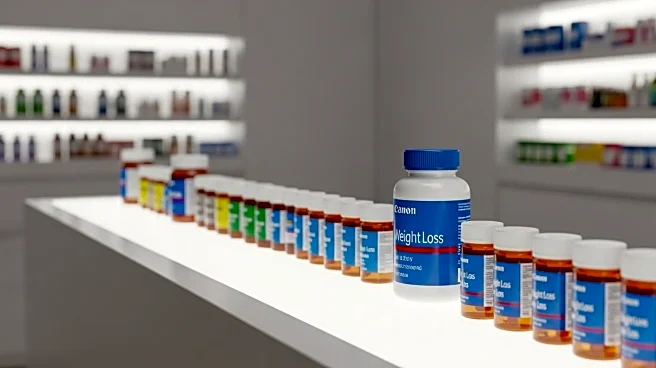What's Happening?
Recent insights highlight the potential interactions between caffeine consumption and the efficacy of various prescription drugs. Caffeine, a central nervous system stimulant, can alter how the body absorbs medication, potentially amplifying side effects or diminishing a drug's intended impact. This is particularly relevant for medications affecting the cardiovascular system, where caffeine's ability to raise heart rate and blood pressure can overlap with the drug's effects. Additionally, caffeine can interfere with blood thinners, increasing the risk of bruising or bleeding. Experts recommend avoiding caffeine when taking stimulant-based cold remedies to prevent heightened side effects like jitteriness and raised blood sugar. Furthermore, caffeine can disrupt the absorption of thyroid and osteoporosis medications if consumed too soon after taking these drugs.
Why It's Important?
The interaction between caffeine and prescription drugs is significant for public health, as it affects a large portion of the population who rely on both caffeine and medication for daily functioning. Mismanagement of these interactions can lead to reduced drug efficacy or increased side effects, potentially compromising treatment outcomes. This issue is particularly critical for individuals with chronic conditions such as cardiovascular diseases, osteoporosis, or thyroid disorders, where consistent medication absorption is crucial. Understanding these interactions can help patients and healthcare providers optimize treatment plans, ensuring that medications work as intended without interference from dietary habits.
What's Next?
Patients are advised to consult with healthcare providers to better understand the timing of caffeine consumption relative to their medication schedules. Adjusting the timing of caffeine intake, such as waiting 30 to 60 minutes after taking medication, can help mitigate potential interactions. Healthcare professionals may need to provide more detailed guidance on managing these interactions, especially for patients on complex medication regimens. Ongoing research into the specific mechanisms of these interactions could further inform clinical guidelines and patient education.










